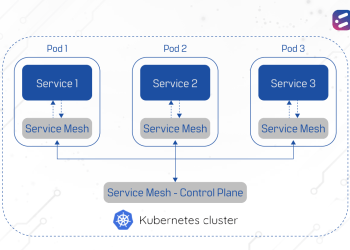Businesses are transforming, and technology is changing. Your enterprise needs to keep pace with digitization. New tools optimize performance, integrate workflow, and improve communication. But they only work if the team is on board.
What is App Modernization?
Application modernization is about enabling businesses to operate in new ways with automated processes. It is an integral part of fueling digital transformation and ensures continuity and stability in the IT world.
As cloud strategies develop, modernization has become a priority for many businesses seeking innovative solutions.
Four Steps To Get App Modernization Right :
Step 1: Get the team on board
New technologies help businesses stay successful, but employees are often so focused on their own tasks that it becomes difficult for them to look beyond the blinkers and learn how to use a new tool. Explaining the big picture and how it will deliver real value is important.
Present the plan, KRAs and KPIs and clarify how the effort involved in adopting the change will deliver positive return on investment. When they’re part of the transformation, your stakeholders feel appreciated and involved in what the company does. These decisions have far reaching implications that affect everyone’s work and the course of a business itself, so it’s important that all stakeholders buy in.
Step 2: Focus on a single point of modernization
Keep conversations and presentations on the plan focused. Dispersed focus results in delays, budget overruns, and team cynicism or project fatigue. Having a loosely explained document that doesn’t clarify needs will only slow down the process.
Take the time to create a comprehensive presentation on the app modernization effort. People need to connect with it before they accept it.
Once that’s done, ask for feedback. This is another way to make them more accepting of the change.
Step 3: Incremental change
The Strangler Fig approach is also likely to help make app modernization easier. It divides your application into different functional domains and replaces each with new microservices-based implementations, one at a time. This creates two separate applications that live side-by-side, until, over time, the newly refactored application replaces the original application. It follows a three-step process of transform, coexist, and eliminate.
This incremental process is preferable to an overnight migration, in which all the code is updated in one go. This doesn’t just increase the risk of error, it also risks losing team members’ enthusiasm to the complexities of the transformation.
Step 4: App Modernization Testing
Testing refines the whole process of app modernization, ensures superior quality and enhanced product functionality, and reduces maintenance costs. Testing helps implement timely preventive and corrective measures, rather than scramble for restorative practices.
Conduct load testing on any microservice that might be expected to experience high volume traffic. Roll out new microservices to a small sub-audience and test performance. Ensure monitoring, logs, records, dashboards, etc are all working as per plan. Then, and only then, can you roll out the application with confidence.
CloudNow’s well-strategized application development and modernization services deliver ease of maintenance, upgrades, and scalability without loss of performance. Talk to a CloudNow Application development expert today.













